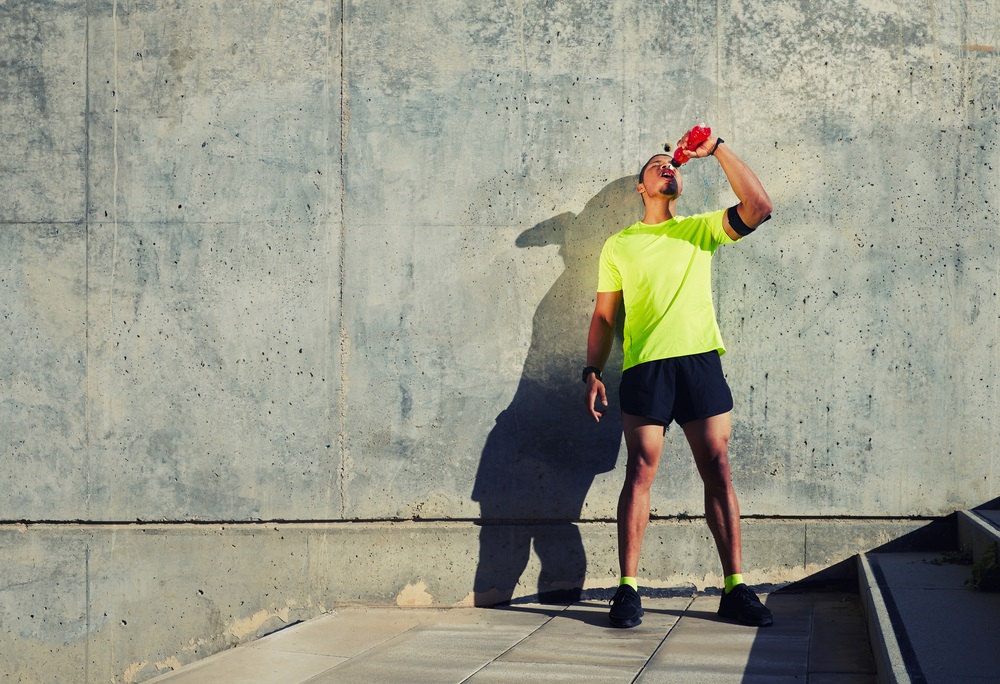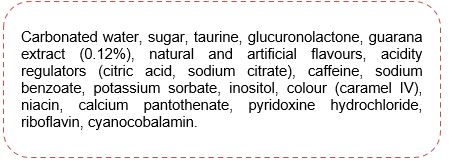- Home
- Blog
- Healthy Eating for Wellness
- Energy drinks part 1 – sugar and caffeine combined
Energy drinks part 1 – sugar and caffeine combined
Written by Catherine Saxelby
on Sunday, 10 April 2022.
Tagged: Energy Drinks, health, healthy eating, healthy lifestyle, nutrition
Of course, you don’t need me to tell you that there’s an energy drinks craze. Red Bull, V, Monster and Mother are just some of the energy drinks seen in the hands of young adults – just like a fashion accessory. Energy drinks are used as a pick-me-up, giving drinkers “the ultimate high” or even “wings”, according to their marketing claims.
Energy drinks are popular at late-night clubs and watering holes because they let you push past tiredness and party on (and these days, who isn’t tired?). But the hype is marketing gone wild. They’re basically soft drinks “supered up” with caffeine plus a concoction of assorted herbal extracts, vitamins and minerals – anything with a vague connection to releasing energy by the body (a biochemical definition) or elevating mood or allowing greater physical activity.
Consume too many, however, and there can be a deadly aftermath, as reports of cardiac arrest attest. Just what’s in these drinks? Do they work how the ads say they do? And how much is safe to consume? In this post, I’ll decode the cocktail of ingredients for you.
What’s in energy drinks?
Energy drinks are sweetened soft drinks pumped up with caffeine and guarana, plus assorted herbal extracts, vitamins, minerals and amino acids such as taurine. Anything with a vague connection to releasing energy by the body or elevating mood seems to be an ingredient.
Ingredient list for a typical energy drink
The ingredients explained
Sugar
Energy drinks can contain about 10–15% refined sugar, which is similar to the amount found in regular soft drinks and about double that of sports drinks. So, one 250 mL can adds 6–7 teaspoons (24–28 grams) of refined sugar to your daily intake. Hardly good for you.

Taurine
This is an important amino acid for metabolism. It is also a component of bile acids, which help absorb fats and fat-soluble vitamins, although its exact role is still not fully understood. Why taurine is included in energy drinks, however, is a bit of a mystery.
The body excretes taurine in times of stress, but there’s no evidence that taking extra taurine can somehow reduce stress. At 0.4% or 1 gram per 250 mL, the level of taurine in energy drinks is particularly high, but there don’t appear to be any harmful side effects related to its high consumption.
Glucuronolactone
Glucuronolactone (glucuronic acid lactone or D-glucurono-γ-lactone) is produced when glucose is metabolised in the liver. It occurs naturally in connective tissues and plant-based gums. Due to a lack of proper human or animal trials, it is unknown if glucuronolactone is safe for human consumption. However, it’s likely that it has limited effects on the human body.
Caffeine
While caffeine is a big feature in energy drinks, the amount of caffeine varies. Some have the same amount of caffeine as a strong cup of instant coffee (about 80 mg per can or bottle), while others are closer to a can of Coke (about 50 mg) or cup of tea (40 mg). I have already written about the cons of consuming too much caffeine. Caffeine is a central nervous system stimulant; it enhances mood, imparts a feeling of vitality and sociability (under the popular but misused term “energy”), overcomes the perception of fatigue, and increases alertness and concentration. You only need to consume about 40 mg of caffeine to experience this mood and energy boost.
Guarana
This is a tropical berry from South America. Each guarana berry contains one seed, which contains about three times as much caffeine as that found in a coffee bean. Just like caffeine, guarana keeps you alert and full of energy, and fights fatigue. If you read the list of ingredients, you’ll see guarana as well as added caffeine. Often, there’s only a little guarana present to make the drink look “natural” and the added caffeine tops up the level to meet the pack’s claims. Guarana has no benefit over caffeine or coffee. They all have the same ingredient–caffeine.
B vitamins (niacin, thiamin and riboflavin)
These are involved releasing energy from food. Niacin is widely added to energy drinks, while thiamin, riboflavin, pyridoxine, pantothenic acid and cyanocobalamin only feature in a few. B vitamins have a role in metabolising energy. Generally, the quantities for niacin are not listed for energy drinks but, when they are, the levels are quite generous, e.g. one 250 mL can provides more than one day’s recommended intake for adults, teens and children. In contrast, the levels of riboflavin and thiamin are much lower, which is puzzling, given that the three B vitamins work well as a team.
In the ingredients list, the following terms indicate added vitamins:
- calcium pantothenate pantothenic acid (previously called vitamin B5)
- pyridoxine hydrochloride pyridoxine (previously called vitamin B6)
- thiamin vitamin B1
- riboflavin vitamin B2
- cyanocobalami vitamin B12
However, there’s no benefit in taking more than your body needs, so the very high levels added to energy drinks aren’t going to help if you already get enough B vitamins from your food.
Citric acid and other acidity regulators
Citric acid (330) or sodium citrates (331) is a food acid that imparts a pleasant tang and counterbalances the sweetness of sugar.
Inositol
Also known more precisely as myo-inositol, this ingredient is used either in combination with or as a substitute for glucose, ostensibly to increase serotonin levels and alertness. In humans, inositol is made naturally from glucose-6-phosphate through a process of enzymatic dephosphorylation.
Additives
In addition, virtually all energy drinks contain:
- a preservative, such as sodium benzoate (210, 211, 212 or 213) – commonly used in all soft drinks, cordials and juices.
- added colours, such as caramel (150, 150d), tartrazine (102), brilliant blue (133) and azorubine (122), depending on the brand.
How much sugar and kilojoules are in these drinks?
Nutrition information
Per serve (per can or bottle)
Energy drink |
Energy (kJ) |
Protein (g) |
Fat total (g) |
Carb total (g) |
Carb Sugars (g) |
|
Red Bull 250 mL |
480 |
0 |
0 |
28 |
27 |
|
Red Bull Sugarfree 250 mL |
34 |
0 |
0 |
0 |
0 |
|
V Guarana 250 mL |
475 |
0 |
0 |
28 |
28 |
|
V Guarana Sugarfree 250 mL |
32 |
0 |
0 |
<1 |
0 |
|
Monster (green can) 500 mL |
986 |
0 |
0 |
58 |
57 |
|
Mother 250 mL |
450 |
<1 |
<1 |
26 |
25 |
|
Musashi Purple Grape Sugarfree 500 mL |
22 |
0 |
0 |
1.1 |
0 |
|
Rockstar Original 500 mL |
1070 |
0 |
0 |
60 |
60 |
Bottom line
There is precious little information about energy drinks, their composition, ingredients and the differences between the brands. Any effect is almost entirely due to their caffeine content. The other ingredients seem to be added mostly as window dressing, rather than for any sound scientific reason. Energy drinks should be limited, or even avoided, because there are so many other nutritious drinks to enjoy instead. In health terms, it would be cheaper and more effective to sip a can of soft drink and take a vitamin supplement.
For more about the effects and dangers of energy drinks, please read “Energy drinks part 2 – safety concerns” after it is published on April 21st.
Foodwatch
The Good Stuff
The Boring Stuff
© 2025 Foodwatch Australia. All rights reserved
Website by Joomstore eCommerce







